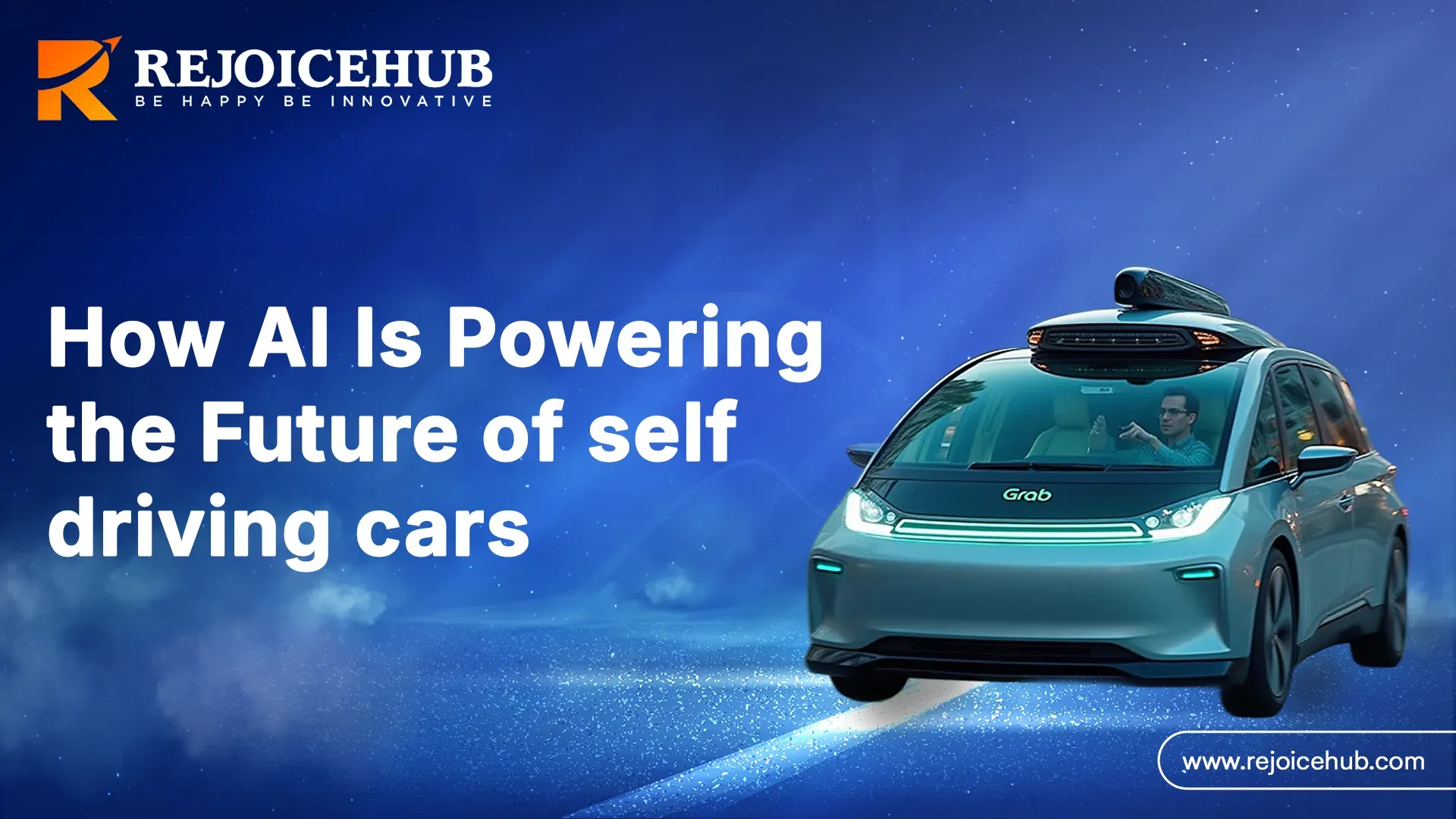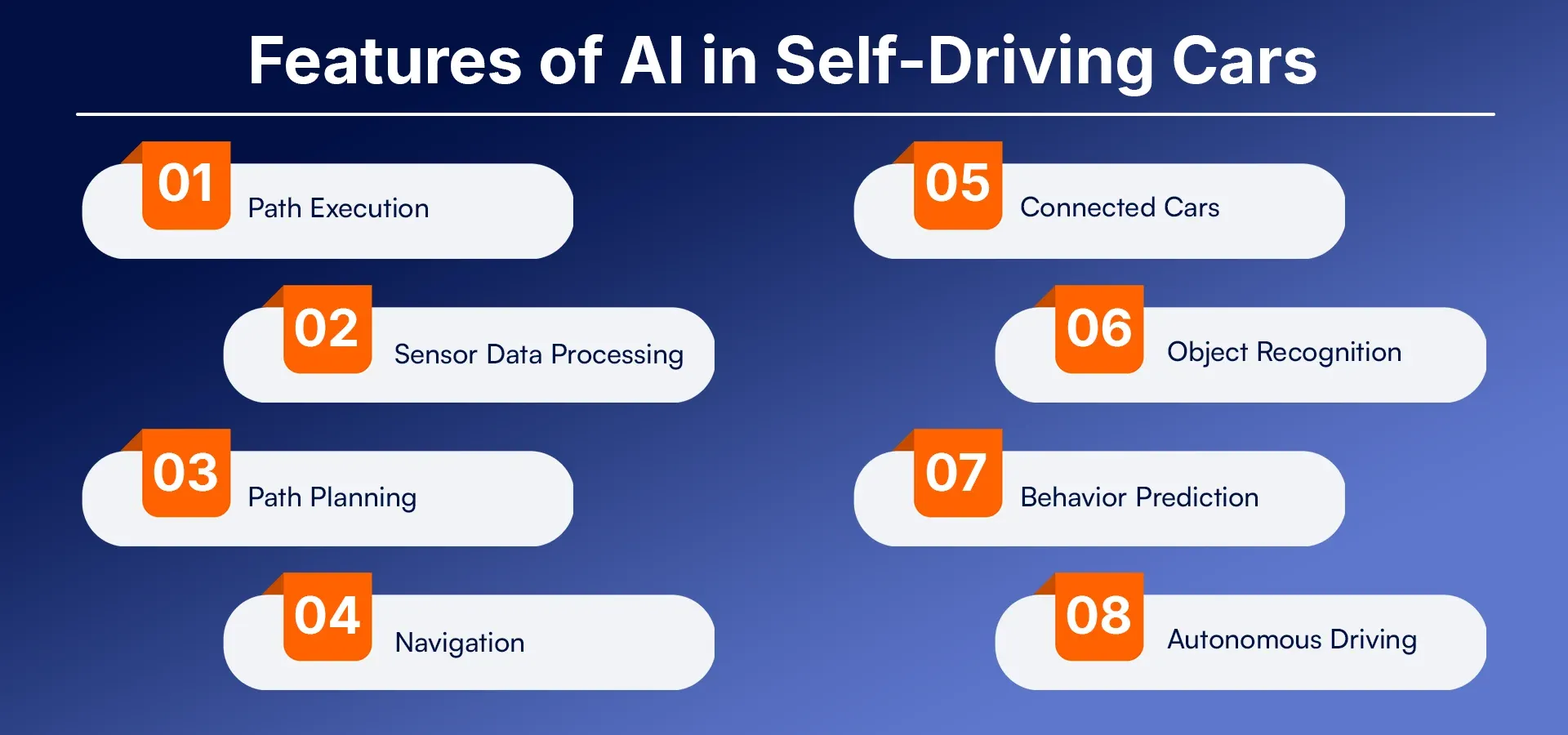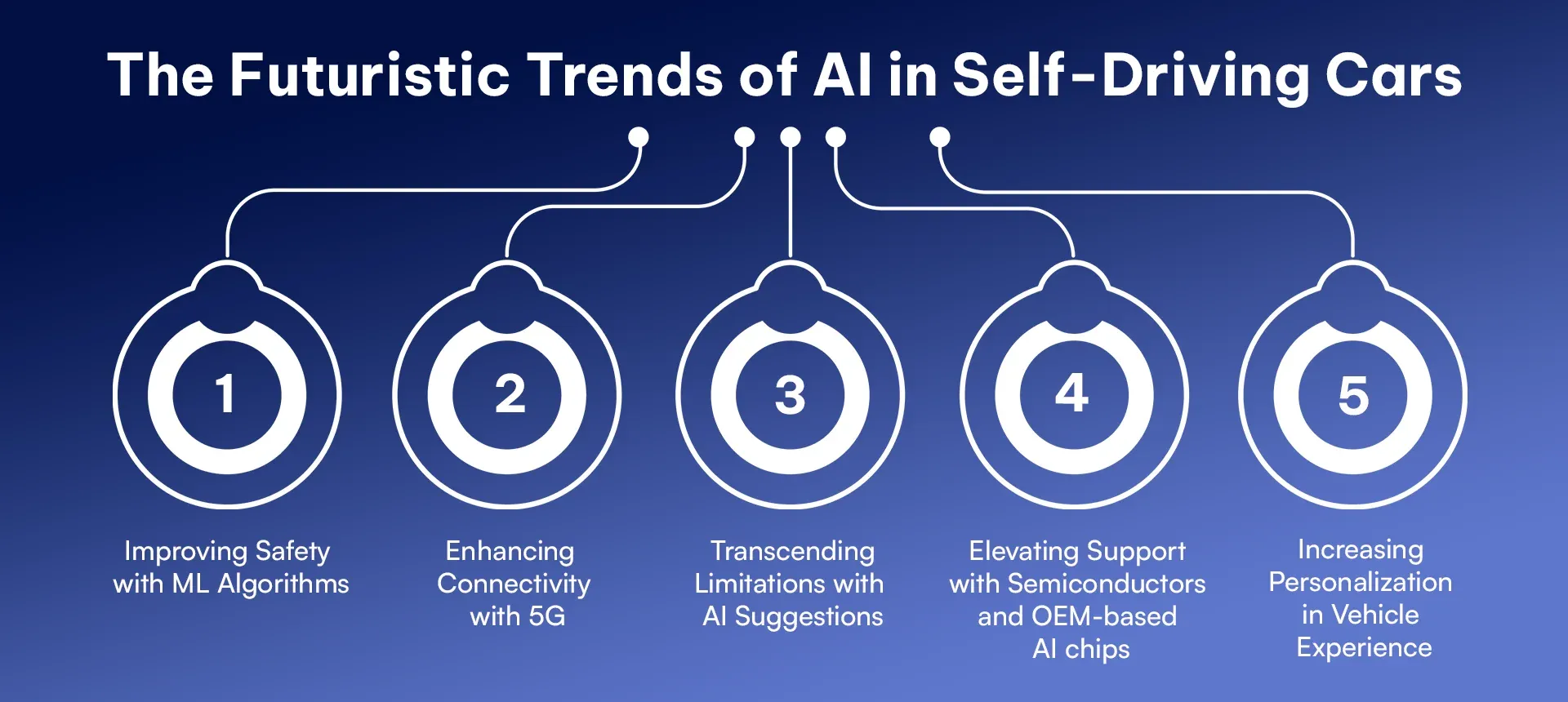
Imagine that you have gone on a long drive alone to another city, and on the way, you are enjoying nature by drinking coffee. When you feel tired, you sleep for a while, and your car automatically drives itself to your destination. This imagination must seem like a sci-fi movie to you, too. But in reality, there are many companies that are working on self-driving cars, and there are many leading companies like Waymo and Tesla that have already launched their self-driving cars.
But as we know that AI is developing a lot, due to which AI is going to make a big and revolutionary impact in the self driving car industry, in fact companies like Tesla are already using AI a lot in their cars so that they can make things advanced and cost effective by using software and AI, well in a hardware oriented market like automobiles.
Many experts say that AI will transform the automobile industry a lot in the next few years, and most of the leading companies are targeting the self-driving cars market, so let's discuss how AI will ultimately transform the self-driving cars of the future.
Quick Summary
Before knowing about the future of self-driving cars, let us set a criterion for self-driving cars so that we can analyse it properly. Basically according to many experts, using AI in self-driving cars will give them capabilities to think, sense and make decisions according to the situation, similar to human drivers. By combining advanced sensors, cameras, and powerful algorithms, these cars can process real-time data to navigate roads, avoid collisions, and even chat with passengers.
And if this technology becomes successful, the result will be safer roads, less traffic, and much increased convenience for travellers. According to Forbes, the market for autonomous vehicles was $54.23 billion in 2019 and it will reach $556.67 billion in 2026, and this much growth is mainly due to advanced models and technological advancements. The future is largely going to be of self-driving cars, so it is important to know how AI will eventually revolutionise the self-driving cars industry.
What is AI in Self-Driving Cars?
Let's try to understand self driving car with a scenario, suppose you are driving on a crowded road and suddenly an old citizen comes very close to your car or suppose you suddenly start feeling dizzy, in such a situation the self-driving car will take complete control and take the right decision according to the situation, like applying brakes in this scenario. The simple meaning of self-driving is that cars without human support can automatically drive safely on real roads. From this, you can suppose that you have thought of teaching your inexperienced friend to drive a car, in which you are trying to give him the knowledge of the car's sensors and buttons.
The simple motive of self-driving cars is to make cars capable of self-driving by using mass intelligence + advanced sensors + compatible hardware. Daily in the USA 24 people meet with accidents due to drunkenness due to which they die, Technology like self-driving will increase human safety a lot, because the sensors of such cars will always work, and whenever they detect something unusual, they will take control of the car.
What is the Role of AI in Self-Driving Cars?
AI plays a central role in self-driving cars by enabling them to perceive their surroundings, make real-time decisions, and navigate safely without human input. Using technologies like computer vision, deep learning, and sensor fusion, AI processes data from cameras, LiDAR, radar, and GPS to detect obstacles, follow traffic rules, and predict the behavior of other road users. It powers critical functions such as lane-keeping, object detection, route planning, and adaptive cruise control. As AI continues to advance, it is making autonomous vehicles safer, more efficient, and closer to widespread adoption. AI is the backbone of autonomous vehicles, because it takes critical tasks and decisions in real time, so let's know about the role of AI for self-driving cars.

-
Sensing and Perception: Understanding the outside atmosphere is also very important in driving, like whether it is raining outside or there is a cyclone outside, because without knowing the outside weather, you cannot drive smoothly. AI models also create a massive amount of real-time data by processing data from cameras, radar and LiDAR in their AI system, so that you can easily know about the car's surroundings from it. The AI system integrates with the car’s sensors to provide accurate information about environmental maps and landmarks, so that the cars can better understand unusual obstacles on the road. This is crucial for navigating complex scenarios, like a busy intersection or a construction zone.
-
Decision Making: In 2025, AI will be more advanced than a chatbot and can take complex real-time decisions by integrating with the cars’ advanced sensors, and the coordination of the AI system and sensors is very important for self-driving cars.
-
Predictive Modelling: AI not only predicts, it also analyzes historical data and compares it with real-time data so that accuracy is always better. Self-driving cars can easily find out what is coming ahead, like whether there is a footpath ahead or a turn, all this information is already available with the AI, due to which its potential capabilities significantly increase the safety measure in a situation like a natural disaster.
-
Natural Language Processing: All Advanced Models (NLP) use natural level processing, if we understand it in simple words then it means that just like a car driver's accuracy increases the more he drives the car, similarly when (NLP) system is used in cars, its accuracy increases with time and the NLP systems are so advanced because they are trained on large datasets, and they are already feeded complete information about what reaction they have to give in different scenarios.
Features of AI in Self-Driving Cars
AI powers the core functions of self-driving cars, enabling them to perceive, decide, and act in real time. If you are also bored with your car and have started imagining the car of the future, then let’s know what the features of AI integrated self-driving cars.

-
Path Execution: Due to AI technology, self-driving cars have the capability to analyse the plane roads, lanes thoroughly and execute the path on their own, whether it is to switch lanes, take a turn or park the car.
-
Sensor Data Processing: For self-driving cars, its sensors are its eyes and sense organs. Self-driving cars have advanced sensors like cameras, LiDAR, and radar, which are integrated with AI, and AI retrieves this data and coordinates the movement of the car in real time. With the help of these sensors, the car understands pedestrians, vehicles, or road signs.
-
Path Planning: Self-driving cars are GPS integrated, because without GPS accuracy self driving cars cannot run, because without GPS, it will not be possible to know exactly what is the current location of the car and what is the way to its destination. That is why self-driving cars use AI based GPS models.
-
Navigation: Self driving cars use AI-powered navigation systems, and it is like having a super-smart co-pilot. It uses real-time road data from Google Maps and sensors to guide the car accurately. Whether it’s avoiding a traffic jam or finding a traffic-free way, AI navigation helps self-driving cars coordinate properly.
-
Connected Cars: In the future, self-driving cars will have communication capabilities thanks to AI, through vehicle-to-vehicle (V2V) communication, self-driving cars share real-time data about road conditions and traffic. This boosts safety and helps avoid collisions by keeping cars in sync.
-
Object Recognition: AI has quite advanced capabilities to spot objects on the road and can easily identify and classify objects like living animals. It uses cameras and sensors to identify everything in its path, ensuring safe driving. This is so important to avoid obstacles.
-
Connected Cars: In the future, self-driving cars will have communication capabilities thanks to AI, through vehicle-to-vehicle (V2V) communication, self-driving cars share real-time data about road conditions and traffic. This boosts safety and helps avoid collisions by keeping cars in sync.
-
Object Recognition: AI has quite advanced capabilities to spot objects on the road and can easily identify and classify objects like living animals. It uses cameras and sensors to identify everything in its path, ensuring safe driving. This is so important to avoid obstacles.
-
Behavior Prediction: Not only does the situation or object anticipate, but the system analyses sensor data, it predicts the behaviour of pedestrians, cyclists, and other vehicles.
-
Autonomous Driving: The main goal of all leading EV or self driving cars companies is to build a fully autonomous driving car and with the help of AI, ML, Deep learning and advanced sensors, this is a very possible dream, in which the car can drive itself and take a person to his destination without any human input.
Also Read: What is AI in the Automotive Industry: A Complete Guide
Examples of AI in Self-Driving Cars
AI powers various critical functions in self-driving cars, making them safer and smarter. Let us know about some examples of current Self driving cars companies that have used AI in their car models.

1. Tesla Autopilot
Tesla uses Autopilot in its Model S, Model 3, Model X self-driving cars. Its AI algorithms make split-second decisions, from lane changes to braking, all while keeping things eco-friendly. Tesla’s precise control and sustainability focus make it a favourite for many car lovers.
2. Waymo
Google's Waymo's AI system tackles complex route planning with ease, using LiDAR and cameras to identify road obstacles or cars outside the surroundings.
3. NVIDIA
NVIDIA isn't building cars but powering them with its Drive platform. This AI computing system integrates advanced features for autonomous driving, setting the stage for smarter, safer vehicles. Nvidia is already popular in the EV market due to its advanced integrated chips.
4. Cruise
This is owned by General Motors. Cruise’s AV uses a unique mix of LiDAR, radar, and cameras, and 40% of its hardware is built for self-driving. Cruise is known for its advanced sensors.
Pros and Cons of AI in Self-Driving Cars
No technology is foolproof, and the integration of AI in self-driving cars has brought a lot of benefits, but let us know in detail about the pros and cons of AI in self driving cars Industry.

Pros of Using AI in Self-Driving Cars
-
Improved Safety: Due to having such a system, chances of human error will be reduced, and these errors will be the reason for 94% of crashes according to WHO. AI's real-time data analysis and quick reactions, along with self-driving cars, are making roads safer.
-
Reduced Traffic Congestion: AI optimises driving patterns, letting cars travel closer together at consistent speeds, easing traffic jams.
-
Productivity and Convenience: Due to the involvement of AI in self-driving cars or vehicles, Passengers can work, relax, or binge-watch shows while the car drives.
-
Enhanced Accessibility: Self-driving cars open up transportation for people with disabilities, the elderly, or those too young to drive.
Cons of Using AI in Self-Driving Cars
-
Data Security and Privacy Concerns: As we know, in the future self self-driving cars will be connected to each other for communication among themselves, and connected cars are vulnerable to cyberattacks, risking personal data and safety.
-
Regulatory and Legal Issues: Varying global regulations make it tough to roll out self-driving cars worldwide, as self-driving cars are perfect for roads in the USA and European countries, but in countries like India and Indonesia, with highly populated and unorganised roads, approval of self-driving cars will be very difficult.
-
Scalability and Infrastructure Adaptation: Scaling from prototypes to mass production requires massive investment and infrastructure changes, because current roads are not suitable for self-driving cars, so if self-driving cars have to be successful in the future then private companies and the government will have to work together so that the roads and vehicle rules are suitable for self-driving cars.
Also Read: What is AI Automation? All You Need to Know
Use Cases of AI in Self-Driving Cars
AI was also used in personal cars, but due to the arrival of advanced AI models, it has revolutionised the self-driving car industry. Let's know about the Use Cases of AI in Self-Driving cars.

-
Optimisation Trajectory: AI plans the smoothest, most efficient routes, cutting travel time and fuel use. This model will prove to be a game changer for the logistics industry as it will make deliveries even faster, and it will also benefit the e-commerce business a lot.
-
Processing Sensor Data: Self-driving cars use advanced cameras ranging from LIDAR and AI processes sensor data to make real-time decisions, keeping vehicles safe in dynamic environments.
-
Insurance Data Analysis: AI analyzes driving data to assess risk and tailor insurance premiums, making policies fairer and more accurate for the consumers.
-
Maintenance Prediction: AI predicts when a vehicle needs maintenance, reducing downtime and costs, maintaining both the health and safety of this vehicle.
The Role of Advanced AI Algorithms in Self-Driving Cars
For self-driving cars, their sensors or AI algorithms are the most important thing, because by integrating self-driving cars with AI algorithms and sensors together they can make real time decisions.
1. Unsupervised Learning
Unsupervised learning is like letting the car explore and learn on its own. It finds patterns in unlabeled data, mostly AI models, and works on an NLP system which is trained to learn any task and gain experience.
-
Anomaly Detection: Self driving cars can spot unusual events, like a sudden roadblock, without human input. Feature Extraction: An AI algorithm pulls key details from sensor data to improve decision-making.
-
Feature Extraction: An AI algorithm pulls key details from sensor data to improve decision-making.
-
Clustering: AI groups similar data points, like identifying traffic patterns or road signs, so if you are going to the office, your car knows when the traffic is more and when it is less, so that it can give you the right road suggestions.
-
Clustering: AI groups similar data points, like identifying traffic patterns or road signs, so if you are going to the office, your car knows when the traffic is more and when it is less, so that it can give you the right road suggestions.
2. Supervised Learning
Supervised learning uses labelled data to train the car, which trains the algorithm on its surroundings or object behaviour patterns
-
Object Recognition: Self-driving cars identify objects like pedestrians or traffic lights with pinpoint accuracy. This reduces the chances of accidents.
-
Behavior Prediction: AI system keeps guessing which turn or road will come next so that the destination route and safety are maintained.
-
Modeling: Self-driving cars are trained in modeling, which uses a car simulation to show how they should react in different situations.
The Futuristic Trends of AI in Self-Driving Cars
Many experts say that the future trends of self-driving cars are going to be very good because of AI, because in the next few years, there will be a lot of AI advancements.

-
Improving Safety with ML Algorithms: Machine learning is making cars smarter every day. By learning from vast datasets, AI can predict risks and reduce accidents. AI algorithms and advanced sensors can even realize the dream of an accident-proof car.
-
Enhancing Connectivity with 5G: With 5G, cars communicate faster and better, creating a seamless driving experience.
-
Transcending Limitations with AI Suggestions: AI now suggests optimal vehicle designs, from engines to body parts, taking customisation to new heights. AI-based self-driving cars will also be able to inform the owner about their health reports.
-
Elevating Support with Semiconductors and OEM-based AI Chips: Semiconductors and AI chips are revolutionizing autonomous driving, supporting systems like cruise control for smoother rides.
-
Increasing Personalization in Vehicle Experience: Brands like Porsche are using AI to tailor vehicles to drivers’ preferences, creating unique experiences. With this integration, customers will also be able to easily add custom features to their car.
How Do Self-Driving Cars Make Decisions?
If you also think that, after all, how do self driving cars make the decision, do they have the capabilities to think? So the answer is that self-driving cars do not have thinking capabilities, but they combine various sensors, cameras, neural networks or NLP systems to make decisions according to their surroundings or situation. Its AI combines data from LiDAR, cameras, and Google Maps to create a 3D map, calculate routes, and control steering and braking. Neural networks spot patterns, like recognising a stop sign, while machine learning ensures the car learns from every drive. It's like a human driver, but with lightning-fast reflexes and no distractions.
Conclusion
AI is making a lot of advancements in the field of self-driving cars, as it is increasing the safety of roads and drivers. The goal of all leading self-driving car companies is to design autonomous self-driving cars that can drive on free roads without any human input. Advanced systems like the Tesla autopilot are already available in the market, but as the AI models advance, there will be a revolution in the model of self-driving cars as well.
As futuristic as self-driving cars sound, they will also come with challenges like cybersecurity and regulations that need to be tackled. With ongoing AI training and advancements like 5G and semiconductors, self-driving cars are poised to redefine mobility. The initial success of self-driving cars will be from the USA and tier 1 countries only, and it is quite difficult to bring self-driving cars to unorganised roads like India, Indonesia, Philippines due to so many factors.
For businesses and innovators looking to contribute to this evolving ecosystem, RejoiceHub offers expert AI development services tailored for the autonomous vehicle industry. From custom AI models to mobility-focused solutions, RejoiceHub empowers companies to build scalable, intelligent systems that drive the future of self-driving technology.
Frequently Asked Questions
1. How is AI improving the safety of self-driving cars?
AI enhances safety through real-time data analysis, object detection, and predictive decision-making, reducing human-error-related accidents.
2. What type of AI is used in self-driving cars?
Machine learning, computer vision, and reinforcement learning power self-driving cars, enabling them to interpret data and navigate autonomously.
3. What are the challenges of AI in self-driving cars?
Challenges include ensuring system reliability, handling complex scenarios, addressing ethical concerns, navigating regulations, and preventing AI biases.
4. Which domain of AI is used in self-driving cars?
Machine learning, computer vision, and deep learning enable vehicles to process sensor data, recognise objects, and drive safely.
5. How does AI work in self-driving cars?
AI processes sensor and camera data to perceive the environment, make real-time decisions, and navigate roads without human intervention.
